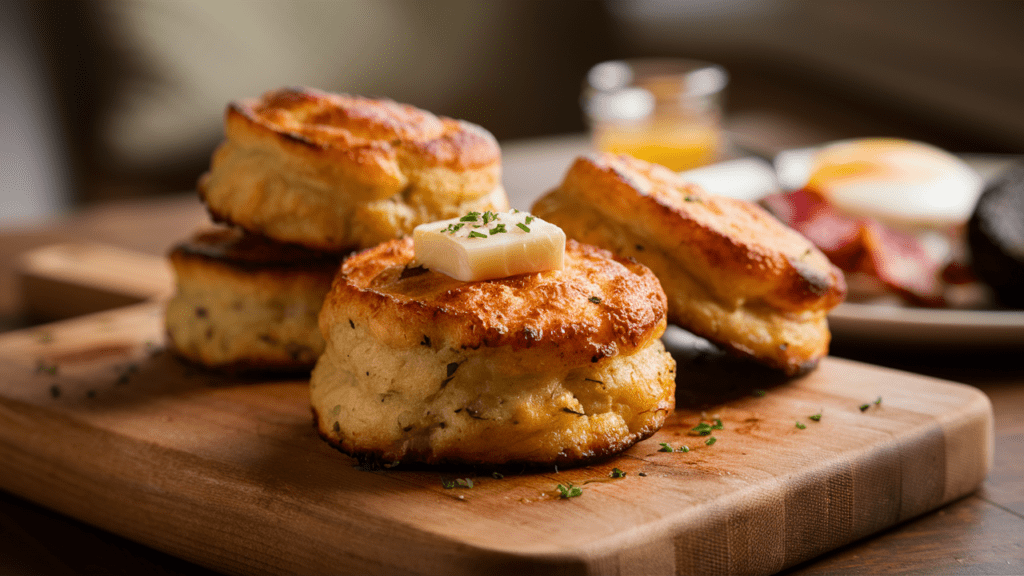
Traditional Potato Scone Recipe

Today, we're excited to share a Potato Scone Recipe, also known as tattie scones. These savoury treats are a beloved part of the traditional Scottish breakfast and are sure to add a comforting touch to your morning meal. Made with simple ingredients and easy steps, these scones are perfect for using up leftover mashed potatoes and bringing a bit of Scottish charm to your table.
History
Did you know that potato scones are a staple of the traditional Scottish breakfast? They are typically made from leftover mashed potatoes, making them an excellent way to reduce food waste. In Scotland, they are often served alongside other breakfast items like bacon, eggs, and black pudding. This frugal yet delicious dish has been enjoyed for generations, highlighting the Scottish knack for turning humble ingredients into something truly special.
Serving Suggestions
Potato scones are incredibly versatile and can be enjoyed in various ways:
- Classic Breakfast: Serve them hot with butter, or as part of a traditional Scottish breakfast with bacon, eggs, and black pudding.
- Smoked Salmon and Cream Cheese: Top the scones with smoked salmon and a dollop of cream cheese for a sophisticated twist.
- Vegetarian Delight: Pair with grilled tomatoes, mushrooms, and spinach for a hearty vegetarian breakfast.
- Afternoon Tea: Enjoy them with a spread of your favourite jam or honey for a delightful afternoon treat.
Storing Instructions
If you have any leftovers (though they’re usually too delicious to resist), store your potato scones in an airtight container:
- Refrigeration: They can be kept in the fridge for up to three days.
- Freezing: For longer storage, freeze the scones in a freezer-safe container for up to three months. Place a piece of parchment paper between each scone to prevent sticking.
Reheating Instructions
To enjoy your potato scones as if they were freshly made:
- Oven: Preheat your oven to 180°C (350°F). Place the scones on a baking tray and cover them with foil. Heat for 10-15 minutes until warm.
- Microwave: Place the scones on a microwave-safe plate and cover them with a damp paper towel. Heat on medium power for 1-2 minutes, checking halfway through.
- Pan: Reheat the scones in a non-stick frying pan over medium heat for a couple of minutes on each side.
Conclusion
We hope you enjoy making and eating these delicious potato scones as much as we do! They’re a fantastic way to add a bit of Scottish heritage to your meals. We’d love to hear how you serve them and any unique twists you put on this classic recipe. Share your thoughts in the comments below, and don’t forget to subscribe for more delightful recipes and culinary stories.
How to Make Potato Scone Recipe
Experience the comforting taste of traditional Scottish potato scones with this easy-to-follow recipe. Made with simple ingredients like Maris Piper potatoes and butter, these savoury scones are perfect for breakfast or any time of the day. Whether enjoyed on their own with a pat of butter or as part of a full Scottish breakfast, these potato scones are sure to become a family favourite.
- 500 g potatoes (peeled and chopped)
- 60 g butter (softened)
- 125 g plain flour (plus extra for dusting)
- 1 tsp baking powder
- 1/2 tsp salt
- 1/4 tsp white pepper
- Vegetable oil
- Boil Potatoes
Place the peeled and chopped potatoes in a pot of salted water. Bring to a boil and cook until tender, about 15 minutes. Drain and let them steam dry for a couple of minutes.
- Mash Potatoes
Mash the potatoes until smooth. You can use a potato ricer for a finer texture.
- Combine Ingredients
In a large bowl, mix the mashed potatoes with the softened butter until well combined. Add the flour, baking powder, salt, and white pepper. Mix until a dough forms. If the dough is too sticky, add a little more flour.
- Knead Dough
Turn the dough out onto a floured surface and knead lightly until smooth. Divide the dough into two equal portions.
- Shape Scones
Roll each portion of dough into a circle about 1 cm thick. Cut each circle into quarters.
- Fry Scones
Heat a little vegetable oil or butter in a non-stick frying pan over medium heat. Fry the scones for about 3-4 minutes on each side until golden brown.
- Serve
Serve hot with butter, or as part of a traditional Scottish breakfast with bacon, eggs, and black pudding.
Servings 4
- Amount Per Serving
- Calories 238kcal
- Calories from Fat 90kcal
- % Daily Value *
- Total Fat 10g16%
- Saturated Fat 6g30%
- Cholesterol 25mg9%
- Sodium 200mg9%
- Potassium 350mg10%
- Total Carbohydrate 32g11%
- Dietary Fiber 3g12%
- Sugars 1g
- Protein 4g8%
- Vitamin A 300 IU
- Vitamin C 10 mg
- Calcium 40 mg
- Iron 1 mg
- Vitamin E 0.5 IU
- Vitamin K 5 mcg
* Percent Daily Values are based on a 2,000 calorie diet. Your daily value may be higher or lower depending on your calorie needs.
- Use leftover mashed potatoes for a quicker preparation.
- Adjust the seasoning to taste, adding more salt or pepper if preferred.
- For a gluten-free version, substitute plain flour with a gluten-free flour blend.
- Serve with your favourite toppings, such as butter, jam, or savoury spreads.
- Ensure the frying pan is not too hot to avoid burning the scones before they cook through.



